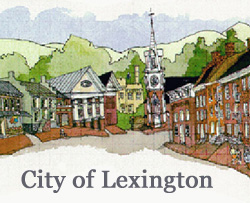April 13, 2011
Gas prices spike to a record high. An earthquake wreaks havoc on a Japanese nuclear power plant. BP requests permission to resume drilling in the Gulf of Mexico. Massey Energy employees recognize the one-year anniversary of the Upper Big Branch mine explosion. Prominent headlines such as these cast a shadow of foreboding and uncertainty over the future of our energy resources, but local homeowners and governments are going green with clean energy in the hopes of reducing their impact and cutting energy costs.
The green homeowner The turbine does not produce sufficient power to meet the family's electricity needs during the day, so the electric company supplies the rest. The excess power produced during the night goes into the electrical grid, and the power company credits them the electricity, a concept called net metering. Since December, Merchant has saved approximately $100 a month on his electric bill. “The inspiration came from the physical look of the machine, then the affordability of it, then the lack of maintenance on the machine,” said Merchant. “We’re looking at eventually becoming green, but that’s a start.” The installation of the windmill took one day and the entire structure cost $8,000. The machinery requires no maintenance, and Merchant expects it to pay itself off in five years. Joe Dinardo encountered several setbacks when he decided to build his 60-foot wind turbine in his yard just off of the Blue Ridge Parkway in Vesuvius. He, too, has benefitted from the energy cost offsets, which range from $40 to $80 each month, but zoning issues and wind turbulence impeded the initial success of the windmill. After extensive study of the wind patterns through his property, Dinardo found a relatively constant air flow at 60 feet. His plan to build a 60-foot-high turbine exceeded Rockbridge County’s 40-foot limit on structures, and because the windmill would be visible above the tree line, the Blue Ridge Parkway management expressed concern about the turbine detracting from the scenery surrounding the parkway. Dinardo filed a request with Rockbridge County and obtained permission to build the 60-foot structure, but said that a community’s concern with visual pollution can overrule its interest in clean energy projects. “People like the idea of alternative energy, but it becomes a problem of ‘not in my backyard,’” said Dinardo. Once he completed construction of the windmill, Dinardo struggled with wind turbulence. Fluctuations in wind speed prevented the turbine from operating to its fullest capacity, reducing electricity generation from 400 kilowatts to about 100 kilowatts. Dinardo said that people need to do the research and figure out which methods for producing alternative energy will best reduce their carbon footprint in accordance with the conditions of their locale. “It’s not just plug and play,” said Dinardo, alluding to the misconceptions about alternative energy. “What works in one location will not necessarily work in another location.” Community energy alternatives The county has not discounted the idea, but director of community development for Rockbridge County Sam Crickenberger said certain factors could present problems. “Gas would have to be piped to a user and it’s a pretty remote location,” said Crickenberger. “We may flare it to a broker for credits or it may turn out to be too expensive for the scale of our landfill.”
Powering a state Nuclear reactors use the heat generated by the fission of uranium to generate clean energy. Nuclear energy is not considered renewable, but its capacity for producing significant amounts of energy efficiently without creating harmful pollutants makes it a viable source of alternative energy. The tragedy at Chernobyl in 1983 prompted the implementation of new safety measures and training for employees, and changes made to the architecture of nuclear power plants were designed to contain a meltdown and resist damage from earthquakes and hurricanes. Although American nuclear facilities are carefully maintained and regulated by the government, safety and the risk of radiation leaks remain primary concerns among the public. Washington and Lee visiting chemistry professor and director of the Alsos Digital Library for Nuclear Issues, Frank Settle, discussed the future of nuclear energy in light of the Fukushima Daiichi debacle in his op-ed article for the Richmond Times-Dispatch. He acknowledges the risks, but says that our current consumption of non-renewable resources and fossil fuels not only poses its own set of dangers, but also is unsustainable as a long-term practice. “The Japanese disaster highlights the liabilities of nuclear power. But no energy source is problem-free,” said Settle. “In the global environment, natural gas has become the oxycodone of energy, providing short-term relief of pain, while coal remains energy’s heroin with a global community of addicts.” In 2009, natural gas supplied 25 percent of energy in the United States, and served as the main heating source for more than half of American homes, according to the U.S. Energy Information Administration. Natural gas can also fuel buses and other vehicles, although less than one percent of natural gas consumed in the United States is used this way. Relative to other fossil fuels, natural gas creates significantly fewer emissions, but as a sustainable source of energy needed to meet worldwide demands, some say clean, renewable energy is the way to go. Where to go from here “I think if we wait for the government to tell us what’s OK or good, we will have turned into bad stewards of our environment,” said Dinardo.
|
||||||
| Regional events calendar |
Local government websites: |
Produced by Washington and Lee digital journalism students.
![]()




